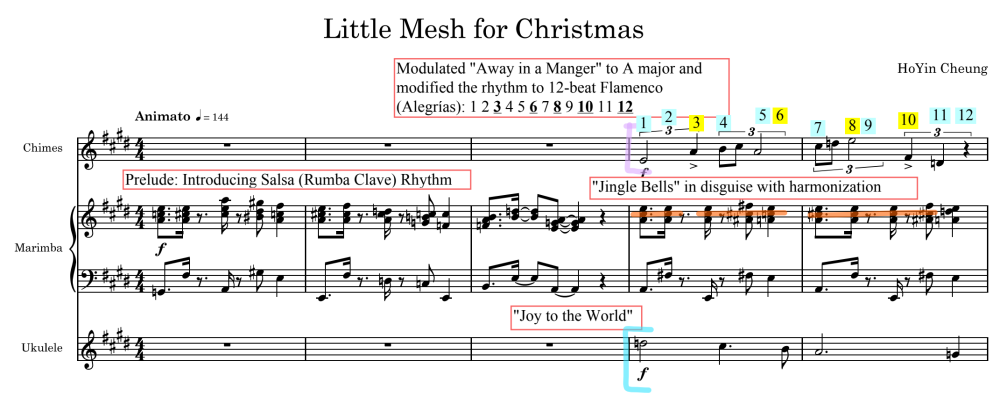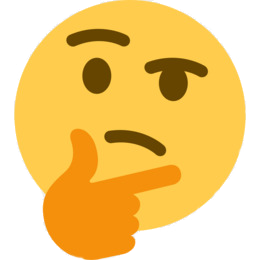-
Posts
172 -
Joined
-
Last visited
-
Days Won
6
HoYin Cheung last won the day on December 10 2025
HoYin Cheung had the most liked content!
About HoYin Cheung
- Birthday August 2
Contact Methods
-
Yahoo
hycbal@gmail.com
Profile Information
-
Biography
An amateur composer/ Violinist composing his life with his own music.
-
Gender
Male
-
Location
Hong Kong
-
Occupation
Engineer
-
Interests
Composing; Math Solving
-
Favorite Composers
Chopin, Rachmaninov, Bartok, Shostakovich, Moritz Moszkowski, Scriabin
-
My Compositional Styles
(Exploring)
-
Notation Software/Sequencers
Dorico
-
Instruments Played
Violin, Recorder
Recent Profile Visitors
HoYin Cheung's Achievements
-

With Every Beat My Heart Knows
HoYin Cheung replied to HoYin Cheung's topic in Incidental Music and Soundtracks
Thank you all for listening. Seems that I failed to write a proper pop song, but something belongs to me! haha. I mainly used this >>ACE Studio<< DAW where I can use AI sounds with different style (pop/ classical, female and male), and they have violin sound library, too. (No sponser/ advertisement here, I am just here to show you if you are interested) @PeterthePapercomPoser Yes, you can make it work in different languages. You input notes and add lyrics accordingly. Then the software will automatically transform them into syllables. While the system only support English and Mandarin (?) at this stage, you can trick the system by manipulating the syllables despite the "wrong" spelling (that's how I dealt with the strange pronounciations). Let's dm for more details. -
Thank you all for listening! @chopin I really hope to add some visual bonus to my audience - and more exposure on Youtube - that's why the Santa is coming! @Luis Hernández Hey, long time no see! When I was writing the mesh-up, I wanna try some sophisticated rhythm (in dance), and flamenco first comes to my mind. I hope it sounds authentic to you as I learn it from Wiki lol @Henry Ng Tsz Kiu Wow, never knew the Gamelan music and that was unexpected you think in that way! @Wieland Handke Hope you enjoyed the music! I know my music may be difficult for some of my audience, and it is always good to add some visual aids if it helps. @PeterthePapercomPoser Hey! I apologize for my bad description. I have attached my detailed annotation for your reference. I hope that will clear things up.
-

2025 Christmas Music Event!
HoYin Cheung replied to PeterthePapercomPoser's topic in Monthly Competitions
My zeroth submission: -

2025 Christmas Music Event!
HoYin Cheung replied to PeterthePapercomPoser's topic in Monthly Competitions
Still participating in this event as committed although I am quite busy lately lol -
Dear all, Happy Christmas for all of you! I used common Xmas tunes to create a cute mesh up! I can't remember how many times I wrote a piece for Christmas - but I gonna try sth new this year. A very short and casual piece by blending different genre - Chime playing Flamenco in triplets (3rd and 10th beats are strong beats) Marimba playing Salsa (Doted rhythm) Ukelele - in standard rhythms
-

Double Ninth Festival - Hiking on Mount Qi
HoYin Cheung replied to HoYin Cheung's topic in Chamber Music
Haha no worries - In fact, my goal is to create a complete set of festival music with strong contrast, and is self-contained - where you can find different types of music and enjoy it throughout any parts of the year. And as you may know, I want to keep the respect and tranquilty of Double Ninth festival so I won't be too "harsh" on the melody😆 Btw, I actually wanted to use Dizi instead of Flute and Clarinet - but I didn't have the sound library for that lol -

2025 Christmas Music Event!
HoYin Cheung replied to PeterthePapercomPoser's topic in Monthly Competitions
I may write a short piece for Xmas too Please count me in too! -
Dear all, (Composer's note: Below Message from Nov 2025) Spoiler alert: It is a Christmas song. I will still write a "classical" Christmas piece but I got this idea first. Please feel free to enjoy it anytime you want. Recently I saw a new DAW software with good AI voices (Disclaimer: just voice, not the writting part), so I wanna test it out and write a sample song for it. That turns out to be excellent (overall speaking), but sometimes the lyrics are not clearly pronounced. I might write more chroal piece with this great tool now. Feel free to tell me how it sounds! Overall structure of the song:- Orchestation: SATB + Violin "Quasi-Rondo" form: ABABCABA’ Strategy: Since it is meant to be a pop song, more direct development to "chorus" Some fun modulations involved HoYin
-

2025 Halloween Satisfaction Survey
HoYin Cheung replied to PeterthePapercomPoser's topic in Monthly Competitions
Overall speaking, I quite enjoy the format and atmosphere of this competition. I think the judging mechanism of this competition is good as, 1) Variety of awards/ scoring criteria - It gives recognition to the composers for certain aspects of his music, and allows (specifically growing composers) much specific target/ direction to enhance. Moreover, appreciation to "good" music in some cases where the music is not fitting to the given theme, but is still pleasant to listen to. 2) Qualitative - Please keep the scoring template optional. IMO the scoring template is a benchmark to distinguish the relative performance of each entrants - while the scoring scale may be inconsistent between different judges (i.e. non-linear and subjective), at least that serves as a tool to establish consensus between different judges the rank of each entrants. -
Hi all, As some of you may know, I am actively engaging in my composition project for differential festivals. For that reason, I want to adapt into different types of music and add more variety in my project. I chose arranging solo piece to orchestal music to 1) appreciate the style of the composer, and 2) hopefully benefit orchestral work listeners/ writers. Work orchestrated in this post: Piano Sonata in C major, Hob. XVI/50, L.60 Written c. 1794 by Joseph Haydn. This first movement - Allegro, was arranged by me. When I have time, I will share other movement. A side note, I only listened to the piano recording once before I decided to arrange it - perhaps it is a good thing in the sense that I got my interpretation different from pre-existing pianists Thank you for listening! Note: Attached original score for reference. HoYin
- 1 reply
-
- 1
-

-

Prelude no.13 - Live performance by Henry Ng
HoYin Cheung replied to Thatguy v2.0's topic in Piano Music, Solo Keyboard
Nostalgic vibe there. Do you think of the harmony first or melody? -

Aos Sí - Piano Quintet for Halloween
HoYin Cheung replied to HoYin Cheung's topic in Competition Hall of Fame
Hello @Omicronrg9 @MK_Piano @UncleRed99 Thank you, my friend, for your generous comment. It must have taken your time to type all of these - which shows your pursue and love for music, as we all do on this community. But what are we pursuing in compositions? I really want to talk deeper in this matter, and please feel free to continue in this post. -
Dear all, I am seeing other composers to arrange pop music recently, so I give it a try. (So bored this weekend for some reason) It is Like JENNIE by Jennie (Blackpink). It is my first time transcribing a pop song. There are no official scores available online for my reference, so I have to do it by ears. (Tried transcribe it with Youtube-to-mp3/midi converter but that was a mess too) If I have to say, the most difficult part is to mimic the half-singing-half-speaking voice of Jennie. Complicated rhythm and very chromatic (and nearly atonal) "melodies" that I have to do it in 0.25x. Took me almost 3 hours to complete the transcription for the 3-minute piece and did some orchestration for the another 1-2 hours. Hope you enjoy it and please feel free to comment on it. Thank you! HoYin Disclaimer: I do NOT own the music. All rights reserved by Jennie et al. Original MV: My arrangement:
- 1 reply
-
- 1
-

-

Aos Sí - Piano Quintet for Halloween
HoYin Cheung replied to HoYin Cheung's topic in Competition Hall of Fame
@MK_Piano Thank you for your kind reply. I hope my music is still pleasant to "post-tonal" ears. I treat it as a compliment when audience tell me they are willing to revisit - that means there are some places of work that is worth memorizing. While in the post-tonal context, while there are lots of idea I want to express in my work, I agree that there should only be "necessary" details in the writing - audience should be able to enjoy the work with their ears - instead of intelligently enjoying the tuplets or excessive dynamic markings by compulsively referring to the score.🫠 Gosh, I apologize for the double stops. I hope all violinists and pianist will forgive me for the effect.😆 While this work will be a part of my larger set of project "Festive", I do want to make it distinctive from other few works. So yes, I am writing this Halloween music with a storyline and realistically refering to the tradition - glad to hear from you I might have succeeded to convey the idea. Thank you! -
I enjoy this piece! The choice of the woodwinds is good - balanced timbre - especially with oboe adding some sense of mystery to the work. The melody is pleasant to listen to, and the development is natural and colourful. But in terms of the competition, I think it might not be the best fit in the "Halloween" theme (perhaps too joyful? 😅) However, I think section N and O lost some "energy" there - I know you may want to depict the gradual diffusion (dying out) of the smoke - I believe there are potential to be more harmonic before the recapitulation. Regarding the playability, I think it is completely fine, in terms of the clear indication and suitable difficulty to the players. Irregular time signature is a feature here. I think it is a light-hearted work that is worth a concert performance! Good work!













